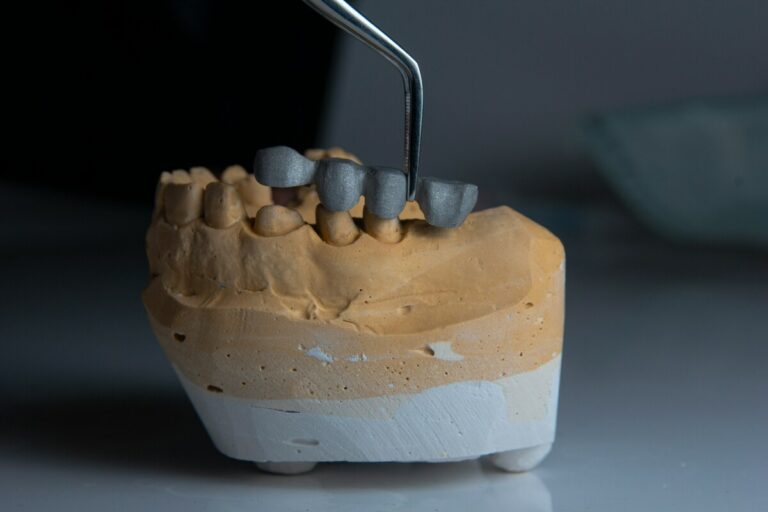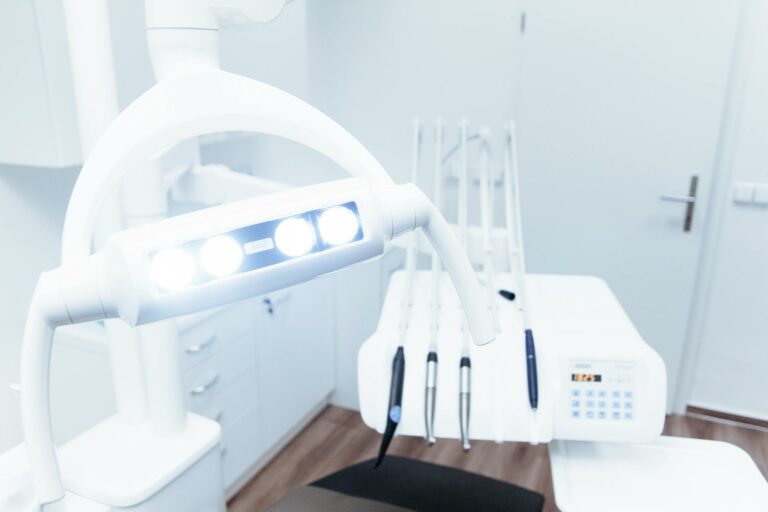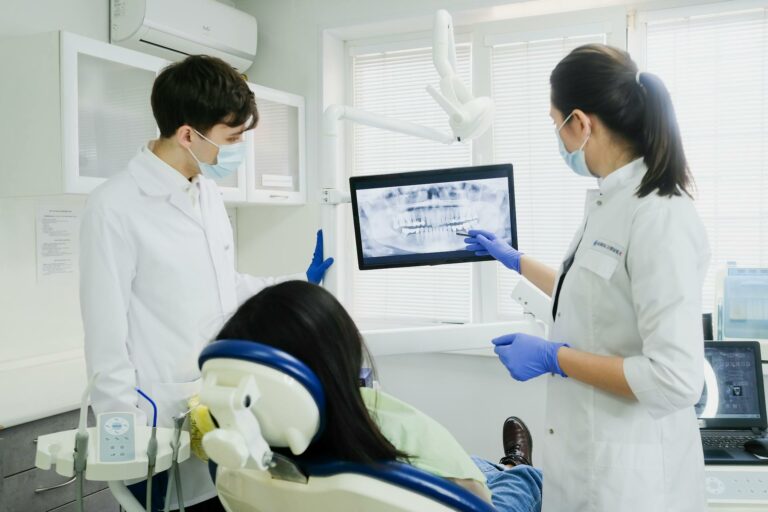Signs You Need a Root Canal in Jersey City: Don’t Ignore These Warning Symptoms
When dental pain strikes, it’s natural to hope it will go away on its own. However, certain symptoms indicate a more serious problem that requires immediate attention from a qualified endodontist. Root canal treatment becomes necessary when the inner pulp of your tooth becomes infected or severely damaged, and recognizing the warning signs early can save your natural tooth and prevent more extensive complications.
The most common indicators include persistent tooth pain that doesn’t resolve, prolonged sensitivity to hot or cold temperatures, swollen or tender gums around the affected tooth, and noticeable tooth discoloration. While the thought of root canal treatment might seem daunting, modern endodontic procedures in Jersey City are virtually pain-free and highly successful at preserving your natural smile.
Understanding these warning signs helps you make informed decisions about your oral health and seek treatment before a manageable situation becomes a dental emergency. At our Jersey City practice, we emphasize early intervention to ensure the best possible outcomes with minimal discomfort.
Severe Tooth Pain That Won’t Go Away
Persistent tooth pain represents the most unmistakable sign that you may need root canal treatment. Unlike temporary discomfort from sensitivity or minor irritation, this pain stems from infected or inflamed pulp tissue deep inside your tooth. The pain typically manifests as sharp, dull, or throbbing sensations that can occur constantly or intermittently throughout the day.
What makes root canal pain different from other dental discomfort is its persistence and intensity. This type of pain doesn’t respond well to over-the-counter pain medications and often returns shortly after any temporary relief. The infected pulp tissue inside your tooth creates ongoing inflammation that won’t resolve without professional treatment.
The pain may radiate to other areas of your face, jaw, or head, making it difficult to pinpoint the exact source. Some patients describe it as a deep, aching sensation that seems to come from within the tooth itself, while others experience sharp, shooting pains that occur suddenly and without warning.
Pain When Chewing or Biting Down
Pressure-related pain during chewing or biting down indicates that the infection has likely reached the root tip area where your tooth connects to the surrounding bone and tissues. This type of discomfort occurs because the infected tissue becomes highly sensitive to any pressure or movement.
You might notice this pain when eating normal foods that previously caused no discomfort. Even gentle pressure from your tongue or slight movements while talking can trigger sharp, intense pain. This symptom often worsens over time as the infection progresses, making it increasingly difficult to eat on the affected side of your mouth.
Throbbing Pain That Keeps You Awake
Nighttime pain that interferes with sleep is a particularly concerning symptom that often indicates advanced infection. When you lie down, increased blood flow to your head can intensify the throbbing sensation in an infected tooth. This pain typically feels like a persistent, rhythmic pulsing that matches your heartbeat.
Many patients report that this type of pain is worse at night and may wake them from sleep multiple times. The horizontal position increases pressure within the infected tooth, creating unbearable discomfort that doesn’t respond to typical pain relief methods. This symptom often signals that the infection has progressed significantly and requires urgent dental attention.
Temperature Sensitivity That Lingers
Normal tooth sensitivity to hot or cold foods and beverages typically resolves quickly once the temperature source is removed. However, prolonged sensitivity that persists for several minutes after exposure indicates potential nerve damage or inflammation requiring root canal treatment.
This type of sensitivity often begins mildly but progressively worsens over time. Initially, you might notice slight discomfort when drinking hot coffee or eating ice cream. As the condition advances, even lukewarm foods or room-temperature air can trigger significant pain that lingers long after the initial contact.
The prolonged nature of this sensitivity distinguishes it from common tooth sensitivity and suggests that the nerve inside your tooth may be dying or severely damaged. This symptom frequently appears alongside other warning signs and rarely improves without professional endodontic treatment.
Hot Drinks Cause Lasting Discomfort
Sensitivity to heat, particularly hot beverages like coffee or tea, often indicates more advanced nerve damage than cold sensitivity. When the pulp tissue inside your tooth becomes infected or inflamed, exposure to heat can trigger intense, lingering pain that persists for several minutes after drinking.
You might find yourself avoiding your favorite hot beverages or needing to drink them at much cooler temperatures. This heat sensitivity often feels like a deep, aching pain that radiates through the affected tooth and surrounding area. Unlike normal sensitivity, this discomfort doesn’t fade quickly and may actually intensify over the minutes following exposure.
Cold Foods Trigger Sharp Pain
Cold sensitivity associated with root canal problems typically manifests as sharp, shooting pain when consuming cold foods or beverages. This pain differs from normal sensitivity by its intensity and duration, often lasting several minutes after the cold stimulus is removed.
Ice cream, cold water, or even breathing in cold air through your mouth can trigger this type of pain. The sensation often feels like an electric shock that travels through the tooth and may cause you to instinctively pull away from the cold source. This symptom frequently develops gradually, becoming more severe and longer-lasting over time.
Visible Signs of Infection Around Your Tooth
Infections don’t always remain hidden inside your tooth. Several visible symptoms can indicate that bacteria have spread to the surrounding tissues, requiring immediate attention to prevent further complications.
Swollen or tender gums around the affected tooth represent your body’s immune response to infection. The gum tissue may appear puffy, red, or feel sore when touched. You might also notice that the gums around the problematic tooth look different from the healthy tissue elsewhere in your mouth.
In some cases, a small bump or abscess may develop near the gum line, which can produce pus drainage with an unpleasant taste or odor. Tooth discoloration can occur when the internal structure becomes damaged or infected, with affected teeth appearing darker, grayish, or showing other color changes compared to your surrounding teeth.
Swollen Gums and Face
Swelling that extends beyond the immediate gum area to include your cheek, jaw, or other facial areas indicates a more serious infection that may be spreading. This type of swelling often feels firm to the touch and may be accompanied by warmth in the affected area.
Facial swelling can make it difficult to open your mouth fully or chew comfortably. The swelling may develop gradually over several days or appear suddenly, depending on how quickly the infection is progressing. Any significant facial swelling warrants immediate dental attention to prevent the infection from spreading to other areas.
Dark or Discolored Tooth
When the pulp inside your tooth dies due to infection or trauma, the tooth may begin to darken or change color. This discoloration typically appears as a grayish, brownish, or blackish tint that becomes more noticeable over time compared to your surrounding healthy teeth.
The color change occurs because the dying tissue inside the tooth releases compounds that stain the tooth structure from within. Unlike surface stains from foods or beverages, this internal discoloration cannot be removed with regular brushing or whitening treatments and indicates that the tooth’s nerve has been severely damaged or has died.
Pimple-Like Bump on Your Gum
A dental abscess often appears as a small, pimple-like bump on the gum near the affected tooth. This bump may be painful to touch and can sometimes drain pus, creating an unpleasant taste in your mouth. The drainage may provide temporary relief from pressure and pain, but the underlying infection remains and requires professional treatment.
Some abscesses develop without visible symptoms initially, while others may be quite prominent and painful. You might notice recurring bumps that appear and disappear in the same area, which indicates an ongoing infection that needs endodontic treatment to resolve completely.
When Root Canal Pain Becomes a Dental Emergency
While most root canal situations develop gradually and can be scheduled for treatment within a few days, certain symptoms indicate that you need immediate emergency care. Understanding when to seek emergency treatment can prevent serious complications and potentially life-threatening infections.
Emergency indicators include fever exceeding 101.4°F, difficulty swallowing or breathing, severe difficulty opening your mouth, and rapid facial swelling. These symptoms suggest that the infection may be spreading beyond the tooth to other areas of your head and neck, requiring immediate medical intervention.
According to the American Dental Association, dental infections can become serious medical emergencies when they spread to surrounding tissues or enter the bloodstream.
Signs Your Infection Is Spreading
When a tooth infection spreads beyond the immediate area, you may experience fever, chills, general fatigue, or feeling unwell overall. Swelling that extends to your neck, difficulty swallowing, or changes in your voice can indicate that the infection is affecting deeper tissues in your head and neck area.
Rapid onset of these symptoms requires immediate emergency medical attention, as spreading dental infections can become life-threatening if not treated promptly. Don’t wait for regular dental office hours if you experience these warning signs – seek emergency care immediately.
When to Call an Emergency Dentist
Contact an emergency dentist immediately if you experience severe, unbearable pain that doesn’t respond to over-the-counter pain medications, significant facial swelling, or any signs of spreading infection. Jersey City residents have access to several emergency dental services that can provide immediate relief and prevent complications.
At our practice, we recommend calling our emergency line when pain interferes with sleep, eating, or daily activities, or when you notice rapid changes in swelling or symptoms. Early emergency intervention often prevents the need for more extensive treatment and hospitalization.
Root Canal Treatment Options in Jersey City
Modern root canal treatment in Jersey City has evolved significantly from outdated perceptions of painful procedures. Today’s endodontic techniques utilize advanced technology and proven anesthetic methods to ensure patient comfort throughout the process.
The procedure involves removing infected pulp, blood vessels, and bacteria from inside the affected tooth, then cleaning and sealing the space to prevent future infection. Advanced practices in Jersey City utilize digital imaging and microscopic visualization for exceptional accuracy, with most procedures completed efficiently in one or two visits depending on complexity.
The Root Canal Procedure Explained
Your endodontist begins by administering local anesthesia to ensure complete comfort throughout the procedure. A small access hole is created in the tooth to reach the infected pulp chamber, where specialized instruments carefully remove all infected tissue and bacteria.
The tooth’s internal chambers and root canals are then thoroughly cleaned and shaped before being filled with a biocompatible material called gutta-percha. Finally, the access hole is sealed with a temporary or permanent filling, and a crown is typically placed to restore the tooth’s full strength and appearance.
Recovery Time and Pain Management
Most patients experience significant pain relief within the first few days following root canal treatment, with complete healing typically occurring within 1-2 weeks. The majority of discomfort subsides by the third day, and over-the-counter pain relievers are usually sufficient to manage any minor swelling and sensitivity.
According to research published by dental institutions, root canal pain typically lasts 3-5 days before gradually subsiding, with most patients returning to normal activities within a week.
Cost and Insurance Coverage
Root canal costs in Jersey City vary based on tooth location and complexity. Front teeth typically cost $792-$1,071, while bicuspid teeth range $959-$1,275. Most dental insurance policies cover 30-50% of endodontic procedures, making the out-of-pocket expense quite manageable for most patients.
With insurance coverage, patients typically pay $200-$500 for front tooth root canals, $300-$700 for premolar treatments, and $400-$900 for molar procedures. Many practices offer financing options to make treatment accessible regardless of immediate budget constraints.
Root Canal vs Tooth Extraction: Making the Right Choice
When facing the decision between root canal treatment and tooth extraction, it’s important to consider both immediate and long-term implications for your oral health and finances. While extraction may seem like a simpler solution initially, preserving your natural tooth through root canal therapy typically provides better long-term outcomes.
Root canal therapy costs between $700-$1,500 per tooth, while tooth extraction ranges from $135-$500 initially. However, tooth replacement options like dental implants, bridges, or dentures can cost $1,500-$6,000, making long-term extraction costs significantly higher than root canals.
Long-Term Cost Comparison
Beyond the immediate financial considerations, preserving your natural tooth maintains proper bite alignment and prevents adjacent teeth from shifting into the empty space. Root canals preserve natural tooth structure and maintain your existing bite relationship, while extractions result in permanent tooth loss and potential jawbone deterioration over time.
When you extract a tooth, the surrounding bone tissue begins to resorb or dissolve due to lack of stimulation from the tooth root. This bone loss can affect your facial structure and make future tooth replacement more challenging and expensive.
Which Treatment Is Right for You?
The decision between root canal and extraction depends on several factors including the extent of tooth damage, your overall oral health, and long-term goals for your smile. Teeth with sufficient healthy structure remaining typically benefit from root canal treatment, while severely damaged teeth may require extraction.
At our Jersey City practice, we carefully evaluate each case to recommend the most appropriate treatment option. We consider factors such as the tooth’s strategic importance for chewing and speaking, the likelihood of successful treatment, and your personal preferences and budget constraints.
Get Expert Root Canal Treatment in Jersey City
Don’t let dental pain control your life or risk serious complications from an untreated tooth infection. The warning signs we’ve discussed – persistent pain, temperature sensitivity, visible swelling, and discoloration – indicate that professional endodontic treatment can save your natural tooth and restore your comfort.
Modern root canal procedures in Jersey City are highly successful and far more comfortable than many patients expect. Our experienced team uses the latest techniques and technology to ensure your treatment is as efficient and painless as possible. We understand that dental anxiety is common, and we’re committed to making your experience as comfortable and stress-free as possible while providing the expert care you need to preserve your natural smile.







